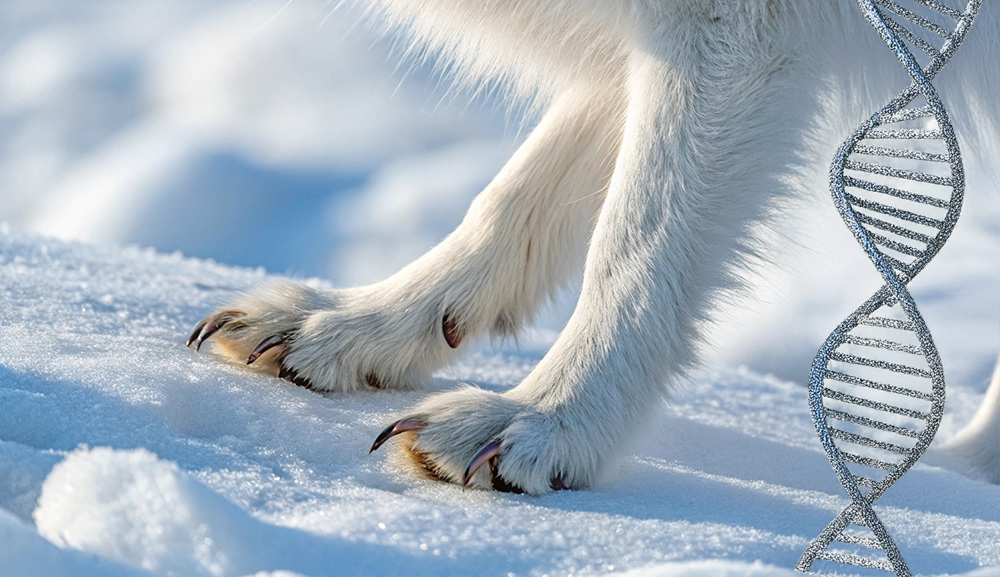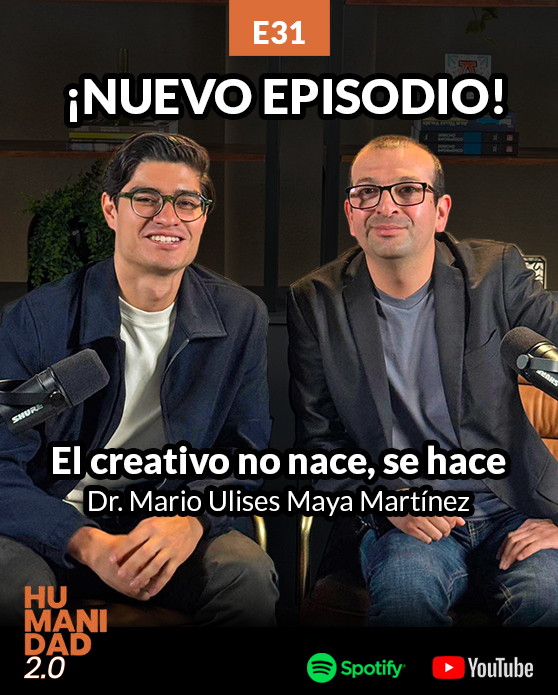
April 23, 2025
Author: Juan Manuel Palomares Cantero
Versión en español
What if the greatest achievement of modern biotechnology were not an act of resurrection, but a sophisticated illusion of power?
Romulus, Remus, and Khaleesi—the three wolves born in a North American reserve—are not exact clones of the legendary Aenocyon dirus, the dire wolf that ruled the Americas over 13,000 years ago. In fact, they are not “resurrected” wolves at all. They are new creatures, surgically designed to resemble—up to a point—their extinct ancestors. What Colossal Biosciences has achieved is not de-extinction, but a feat of genetic reconstruction: a biotechnological reinterpretation of a vanished species, assembled through selected genes and CRISPR technology. These wolves never actually existed in evolutionary history. And yet, they run, howl, and inhabit the public imagination as if they had returned from the past.
This article questions not only whether we can scientifically accept this form of hybrid life, but whether we should accept it ethically. What are we seeking as a species when we manipulate genetic history? What risks, boundaries, and responsibilities are involved in creating a creature that seems familiar but never truly existed?
The Fascination with Reviving the Extinct: Scientific Goal, Ecological Restoration, or Biotech Spectacle?
The case of these “recreated” wolves has been presented as a turning point in genetic science, a breakthrough that supposedly defies the boundaries of time. Yet beyond the striking images and inevitable Game of Thrones references, one essential fact must be emphasized: we are not witnessing the true resurrection of an extinct species, but the creation of an entirely new organism, constructed from genetic fragments of the past and human decisions of the present. There is no de-extinction—only selective fabrication.
This distinction is not minor. From a scientific perspective, the project allows exploration of the limits of genetic editing and the use of ancient DNA, potentially leading to valuable applications in the conservation of endangered species. Ecologically, its proponents argue that these technologies may help restore genetic diversity in animals at risk, like the red wolf. But beyond the technical arguments lies a deeply human symbolic dimension: nostalgia for what has been lost, the desire to reverse irreversible processes, or even the drive to turn fiction into reality.
Faced with this blend of science, spectacle, and storytelling, it is legitimate to ask whether the true purpose is to expand knowledge of life or to assert control over it. Rather than an act of scientific humility, projects like this often seem driven by a logic of biotechnological dominance, where the extraordinary captures more attention than the essential. And in that game, we risk rewriting natural history not to restore its balance, but to satisfy a cultural fascination with the novel and the astonishing. The value of a species, then, no longer lies in its ecological role, but in its capacity to inspire awe.
The Precautionary Principle: When Power Does Not Mean Obligation
Once the myth of a genuine “resurrection” of the dire wolf is dismantled, it is worth examining the experiment from a more critical ethical perspective. Even if it is only a partial genetic reconstruction and not an exact cloning, the fundamental questions remain: Is it wise to interfere so freely in evolutionary processes? How far should we go in pushing biology to recreate creatures inspired by extinct species?
From a bioethical standpoint, the precautionary principle reminds us that not everything technically possible is automatically justifiable. In contexts where ecological, health, or social effects are uncertain, prudence must outweigh enthusiasm. The case of these new wolves—although born in controlled environments—places us in complex scenarios: How will they biologically respond to their new condition? What impact might they have if an attempt is made to introduce them into a natural ecosystem? We are talking about an environment that has profoundly changed since something like Aenocyon dirus last walked the Earth.
Added to these dilemmas are the inherent risks of advanced genetic manipulation: unforeseen mutations, immune mismatches, genetic instability, or even the emergence of zoonotic diseases from ancient genes. There is also the ethical problem of animal suffering: the use of surrogate wolf mothers, the risks of malformations in edited embryos, and the implications of creating organisms whose lives will be permanently monitored.
At this point, the precautionary principle does not serve as an irrational brake, but as a moral compass in the face of the unknown. Its call for moderation is complemented by another equally crucial ethical pillar: the principle of care. If one warns us of risks, the other reminds us of our responsibility toward the living beings involved. Science cannot be content with proving that something is possible; it must also ask whether it is just, sustainable, and necessary. And when what is at stake is the deep manipulation of life, spectacle must not replace judgment.
The Principle of Care and the Common Good: Beyond the Individual, Thinking of the Community of Life
If the precautionary principle warns us of the risks of intervening in the unknown, the principle of care demands attention to what is already before us: concrete, vulnerable life, created by our own hands. In the case of the wolves modified by Colossal Biosciences, this ethic becomes especially urgent. We are not just talking about biologically novel creatures but about living beings whose existence depends entirely on human design, artificial environments, and permanent control. Are we truly considering their well-being, their potential adaptation, or the conditions of their suffering?
The fascination with spectacle can cloud ethical judgment. When biotechnology is geared more toward the spectacular than the responsible, care risks being confused with manipulation. To care is to act with empathy, limits, and responsibility; it is not enough to keep a lab-designed organism alive—we must ask whether that life makes sense, whether it has dignity, and whether it exists in a context compatible with its nature.
Thinking from the perspective of the common good forces us to broaden our scope. It’s not just about these wolves created under controlled conditions, but about the entire ecosystem, real (not reconstructed) biodiversity, and the long-term impact of these decisions. Ecological sustainability is not achieved by reviving fragments of the past, but by actively protecting what is still alive. Diverting attention, resources, and political will to creatures designed to captivate may ultimately weaken genuine conservation efforts.
Moreover, this holistic view of the common good requires us to consider consequences not always immediately visible. What if reviving a species also reactivates its threats? Even if these wolves are not identical to Aenocyon dirus, they retain genetic traits of a predator adapted to a world that no longer exists. What would happen if their behavior, metabolism, or genetics caused unexpected imbalances in natural settings or when interacting with other species? Even if they remain in reserves, their mere existence opens the door to future scenarios that are difficult to anticipate.
Added to this is a serious concern: health risk. These organisms, built with millennia-old DNA, could carry viruses, develop unpredictable mutations, or generate new forms of zoonotic transmission. This is not science fiction—it is a real possibility that challenges both science and bioethics. Reviving a species without understanding the threats it may carry is like opening a time capsule without containment measures.
The question, then, is not whether we can bring these creatures back. The real question is whether we are prepared—ethically, ecologically, and socially—to live with what we’ve created. In a world where life is increasingly fragile, perhaps the greatest show of power is not in reviving the lost, but in caring for what still exists.
Conclusions: Between Scientific Wonder and the Ethics of Humility
The case of the dire wolf is not merely a biotechnological achievement; it is a reflection of our relationship with life, history, and power. What Colossal has achieved is not the resurrection of an extinct species, but the creation of a new organism shaped by our expectations, fears, and fantasies. In that sense, more than a return from the past, these wolves are a mirror of the present: of our fascination with controlling nature and our difficulty accepting its limits.
Reviving fragments of the past may seem like a triumph over time, but it could also become an irreversible mistake if done out of arrogance rather than responsibility. Power does not imply obligation, and altering life does not exempt us from deeply caring about its consequences. Science can amaze us, but only science guided by humility and respect can truly serve the common good.
If what drives us is the protection of biodiversity and the planet’s future, true courage lies not in bringing back the extinct, but in defending—with clarity and empathy—what still breathes, grows, and fights to survive.
Juan Manuel Palomares Cantero is a lawyer, holds a master's and Ph.D. in Bioethics from Universidad Anáhuac, Mexico. He has served as Director of Human Capital and as general coordinator at the Faculty of Bioethics. He is currently a researcher at the Academic Directorate of Integral Formation at the same university. He is a member of the Mexican National Academy of Bioethics and the Latin American and Caribbean Federation of Bioethics Institutions. This article was assisted in its writing by ChatGPT, an artificial intelligence tool developed by OpenAI.
The opinions shared in this blog are solely those of the respective authors and do not necessarily reflect a unanimous view of the seminars or an official position from CADEBI. We value and welcome any comments, responses, or constructive criticism you wish to share.
More information:
Centro Anáhuac de Desarrollo Estratégico en Bioética (CADEBI)
Dr. Alejandro Sánchez Guerrero
alejandro.sanchezg@anahuac.mx





